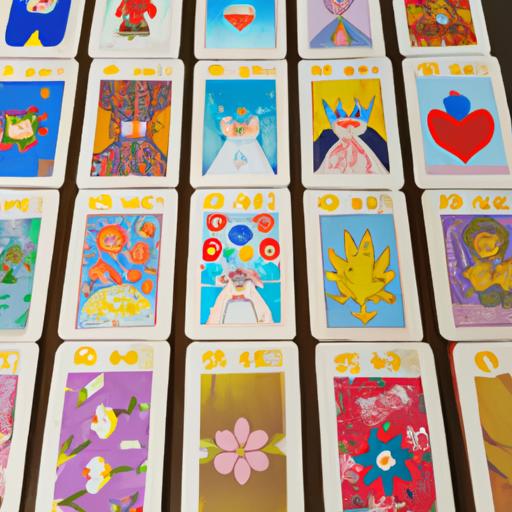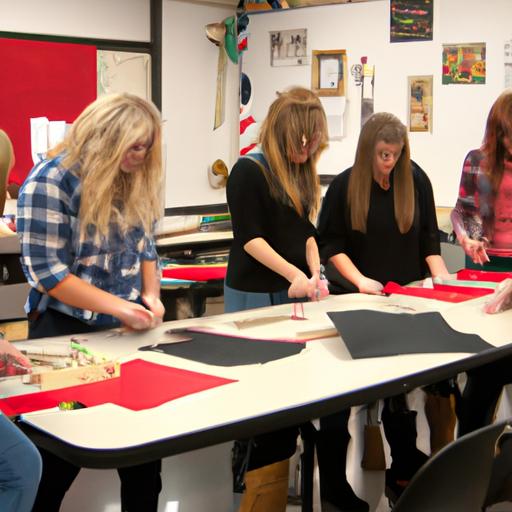Art has always been a powerful way for humans to express themselves, communicate ideas, and evoke emotions. Visual arts, in particular, encompass a vast array of creative disciplines that captivate our senses and ignite our imagination. From paintings and sculptures to photography and architecture, visual arts hold a significant place in our society. In this article, we will delve into the definition of visual arts and explore the various aspects that make it a fundamental part of our cultural fabric.
A Brief Overview of Visual Arts
Visual arts refer to the creation of artwork that is primarily visual in nature. It encompasses a wide range of artistic disciplines that engage our visual senses, including painting, drawing, sculpture, photography, printmaking, graphic design, architecture, film, and animation. Each discipline offers a unique expression of artistic creativity, utilizing different techniques, styles, and mediums.
The Importance of Understanding the Definition of Visual Arts
Understanding the definition of visual arts is crucial as it provides a foundation for appreciating and interpreting artistic works. It allows us to recognize the skill, thought, and intention behind each piece of art, enabling a deeper connection with the artist’s message. By comprehending the definition of visual arts, we can engage in meaningful discussions, critique artwork constructively, and develop our own artistic sensibilities.
Visual arts also play a vital role in education and personal growth. They encourage creative thinking, imagination, and problem-solving skills. By studying and practicing visual arts, individuals can enhance their ability to observe, analyze, and interpret the world around them. Moreover, visual arts contribute to cultural enrichment and societal development, fostering a sense of identity and preserving historical narratives through visual representation.
So, let us embark on this journey of exploration, where we will delve into the various disciplines within visual arts, understand their significance in society, uncover the evolution of artistic styles and movements, and ultimately, develop a profound appreciation for the world of visual arts.
Exploring the Various Disciplines within Visual Arts
Visual arts encompass a diverse range of disciplines that offer unique expressions of creativity. Each discipline within visual arts holds its own significance and contributes to the rich tapestry of artistic expression. Let’s delve into some of the prominent disciplines within visual arts:
A. Painting and Drawing
Painting and drawing are perhaps the most recognizable and traditional forms of visual arts. These disciplines involve creating images using brushes, pencils, or other tools on various surfaces such as canvas or paper. From realistic portraits to abstract compositions, painting and drawing allow artists to convey emotions, ideas, and stories through the use of color, line, and form.
B. Sculpture and Ceramics
Sculpture and ceramics involve the creation of three-dimensional artworks. Sculptures can be crafted from various materials such as stone, wood, metal, or clay, while ceramics focus specifically on clay as the primary medium. Sculptors and ceramicists manipulate these materials to create intricate forms, textures, and structures that engage the viewer’s tactile and visual senses.
C. Photography and Digital Art
Photography and digital art have revolutionized the visual arts landscape in recent times. Photography captures moments in time, freezing them into still images that document reality or evoke a specific mood or concept. On the other hand, digital art utilizes technology and computer software to create unique and imaginative artworks that transcend traditional boundaries.
D. Printmaking and Graphic Design
Printmaking involves the creation of artwork through various printing techniques, such as etching, screenprinting, or lithography. These techniques allow artists to reproduce their work multiple times, making it more accessible to a wider audience. Graphic design, on the other hand, focuses on visual communication and combines typography, imagery, and layout to convey messages effectively in various media.
E. Architecture and Interior Design
Architecture and interior design merge functionality and aesthetics to create spaces that are not only visually appealing but also serve specific purposes. Architects design buildings and structures, considering factors such as form, function, and sustainability. Interior designers, on the other hand, focus on the arrangement and decoration of interior spaces to enhance the overall experience and ambiance.
F. Film and Animation
Film and animation bring visual storytelling to life through moving images. Filmmakers use a combination of visuals, sound, and narrative to evoke emotions and convey messages. Animation, on the other hand, offers a unique form of storytelling through the manipulation of images, creating the illusion of movement. Both disciplines have the power to transport audiences to different worlds and ignite their imagination.
Each of these disciplines within visual arts offers a distinct avenue for artistic expression, contributing to the vibrant and ever-evolving world of visual arts.
Understanding the Role of Visual Arts in Society
Visual arts go beyond being mere creations of beauty; they hold a significant role in shaping and reflecting our society. Let us explore the profound impact of visual arts in various aspects of our lives.
Visual Arts as a Reflection of Culture and Society
Visual arts serve as a mirror that reflects the values, beliefs, and aspirations of a culture and society. Through artistic expressions, artists capture the essence of their surroundings, documenting historical events, societal norms, and cultural practices. Paintings, sculptures, and other visual art forms often serve as visual records of a particular time period, allowing future generations to gain insights into the past.
Impact of Visual Arts on Personal Expression and Communication
Visual arts provide a powerful means of personal expression and communication. Artists use their creativity and skills to convey emotions, ideas, and perspectives that may be difficult to articulate through words alone. Art can spark conversations, challenge societal norms, and provoke deep thought and introspection. By engaging with visual arts, individuals can explore their own emotions, experiences, and identities, finding solace and connection through the shared human experience.
Role of Visual Arts in Education and Therapy
Visual arts play a crucial role in education, fostering creativity, critical thinking, and problem-solving skills. By incorporating visual arts into curriculum, students are encouraged to think outside the box, explore different perspectives, and develop their own unique artistic voice. Moreover, visual arts provide a therapeutic outlet for individuals facing emotional or psychological challenges. Art therapy has been proven to promote self-expression, reduce stress, and enhance overall well-being.
In conclusion, visual arts serve as a reflection of culture and society, enabling personal expression and communication, and playing a vital role in education and therapy. By appreciating and engaging with visual arts, we can gain a deeper understanding of ourselves, our communities, and the world at large.
Artistic Styles and Movements in Visual Arts
Artistic styles and movements have played a pivotal role in shaping the visual arts throughout history. They reflect the changing ideologies, cultural shifts, and artistic innovations of different eras. By studying these styles and movements, we gain valuable insights into the evolution and development of visual arts.
Overview of Major Artistic Styles and Movements
Artistic styles and movements are characterized by distinct aesthetics, techniques, and themes that define a particular period or group of artists. From the Renaissance and Baroque to Impressionism, Cubism, and Surrealism, each style encapsulates a unique artistic expression. Exploring these styles allows us to appreciate the diverse range of artistic approaches and the individuality of artists within each movement.
Influence of Artistic Styles on Visual Arts
Artistic styles have a profound impact on the visual arts. They inspire and influence artists, shaping their creative decisions and artistic vision. For example, the shift from realistic representation in the Renaissance to the abstract interpretations of Cubism revolutionized the way artists approached subjects and compositions. Understanding the influence of artistic styles enables us to recognize the context and intention behind an artwork, deepening our appreciation for the artistic process.
Evolution and Development of Visual Arts over Time
Visual arts have evolved significantly over time, paralleling the societal, technological, and cultural changes that have taken place. The emergence of new artistic styles and movements marks pivotal moments in the history of visual arts. Each period builds upon the achievements of its predecessors while pushing the boundaries of artistic expression.
From the classical beauty of ancient art to the experimental nature of contemporary art, the evolution of visual arts showcases the adaptability and creativity of human expression. By tracing this progression, we gain a holistic understanding of how art has transformed and continues to evolve in response to ever-changing dynamics.
As we delve deeper into the world of visual arts, we will unravel the captivating stories and artistic journeys that have shaped the art we admire today. Stay tuned for the upcoming sections, where we will explore the role of visual arts in society, the different artistic disciplines, and more.
Conclusion
In conclusion, the definition of visual arts encompasses a vast and diverse realm of creative expression. It is a dynamic field that encompasses various disciplines, styles, and mediums, allowing artists to communicate their ideas, emotions, and perspectives visually. Understanding the definition of visual arts is crucial as it provides a foundation for appreciating and interpreting artwork.
Visual arts hold immense historical and cultural significance, reflecting the values, beliefs, and experiences of different societies throughout time. From ancient cave paintings to contemporary digital art, visual arts have played a pivotal role in shaping our collective human experience.
Engaging with visual arts not only allows us to appreciate the immense talent and skill of artists but also provides a platform for personal growth and self-expression. It encourages creativity, critical thinking, and emotional exploration, enabling us to connect with ourselves and the world around us in profound ways.
As we have explored the various disciplines within visual arts, their role in society, and the development of artistic styles and movements, we have gained a deeper understanding of the power and significance of visual arts in our lives. It is through visual arts that we can experience beauty, provoke thought, challenge norms, and inspire change.
So, let us embrace the world of visual arts, explore its vastness, and continue to celebrate the creativity and expression it brings to our lives. Whether as an artist or an appreciator, visual arts have the incredible ability to enrich our existence and provide a platform for meaningful connections. Let us continue to appreciate, create, and support the visual arts, for they are a testament to the boundless potential of human imagination and creativity.





